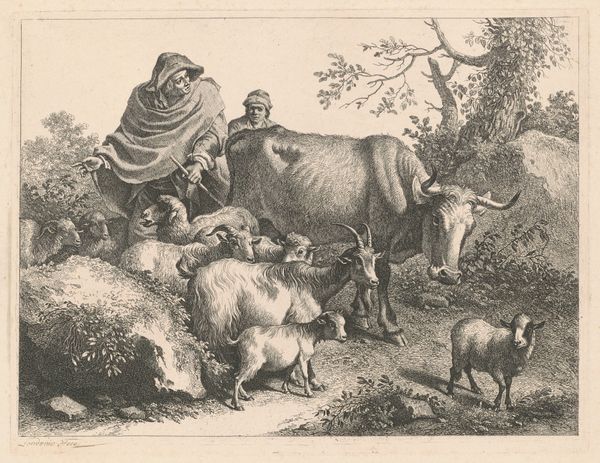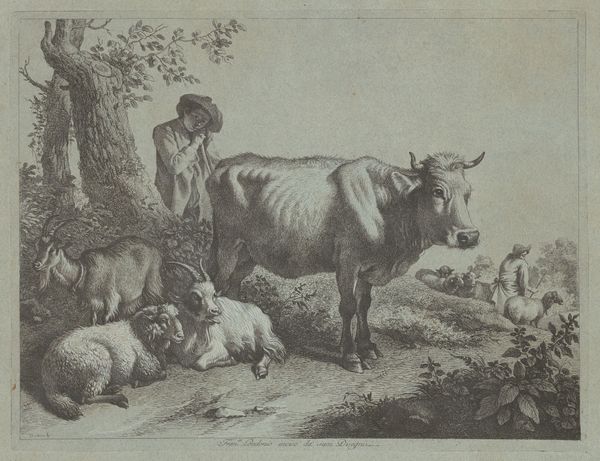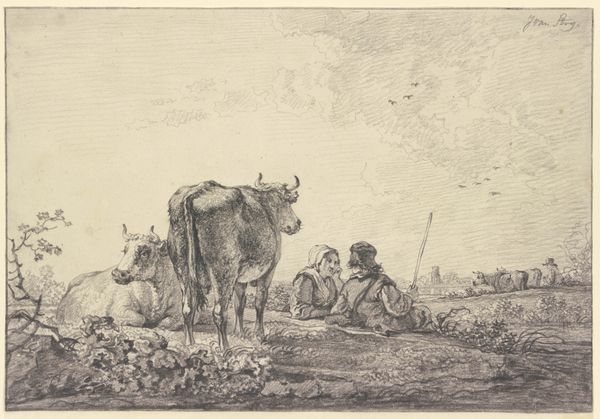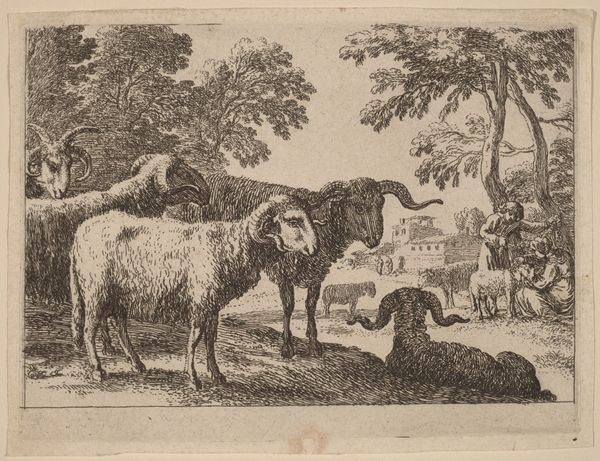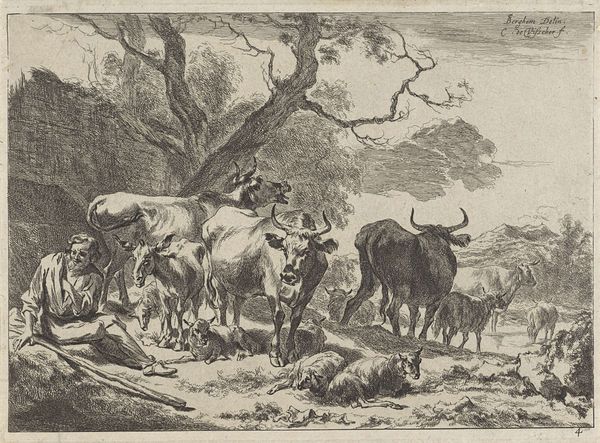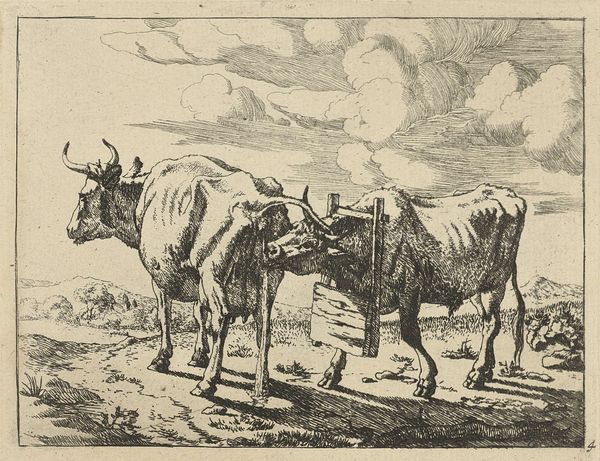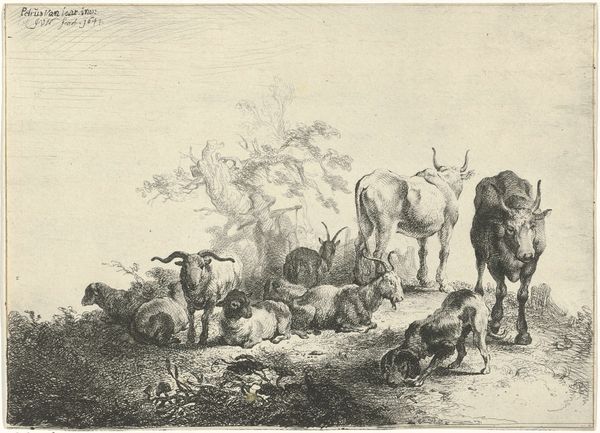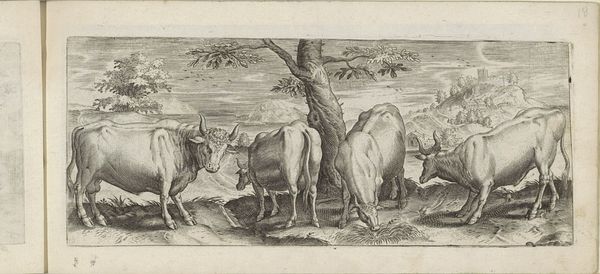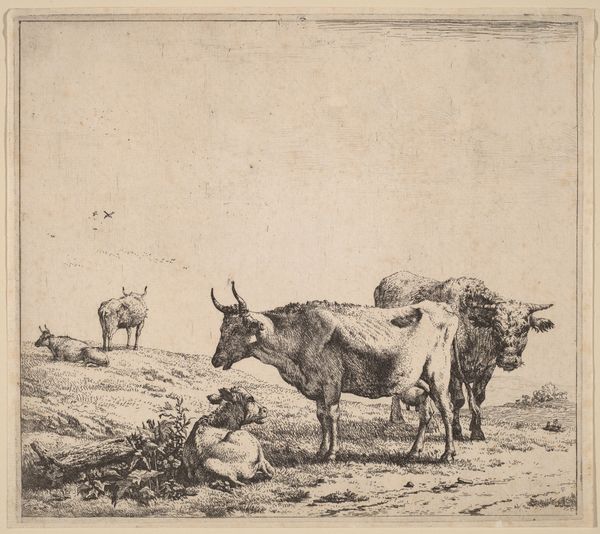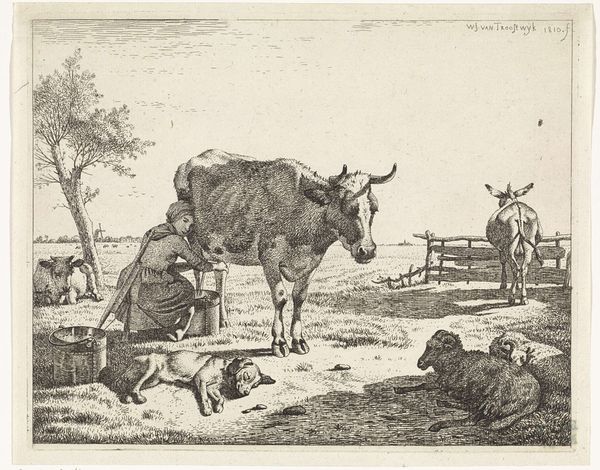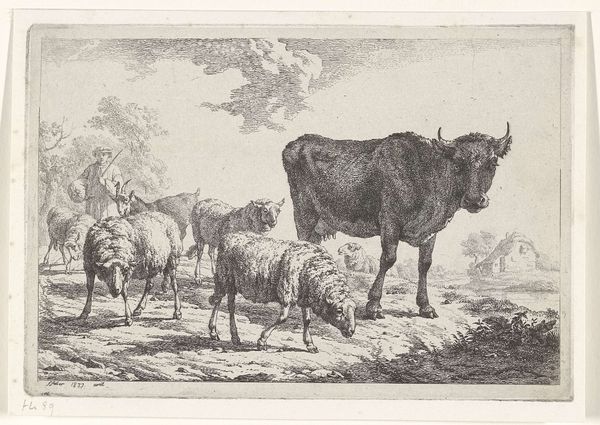
Cowherd driving three horned cattle before him; below, in the foreground, a recumbent steer and a standing steer, marsh and trees beyond 1649
0:00
0:00
drawing, print, etching
#
tree
#
drawing
#
animal
#
dutch-golden-age
# print
#
etching
#
landscape
#
pencil drawing
#
realism
Dimensions: plate: 7 1/8 x 7 15/16 in. (18.1 x 20.1 cm) sheet: 9 15/16 x 11 5/16 in. (25.2 x 28.8 cm)
Copyright: Public Domain
Editor: This etching by Paulus Potter, titled "Cowherd driving three horned cattle before him; below, in the foreground, a recumbent steer and a standing steer, marsh and trees beyond," was made in 1649. I'm really struck by the almost photographic realism of the animals, especially considering the date. What do you think gives this piece its power? Curator: The key to this work lies in its historical context. The Dutch Golden Age was a period of unprecedented economic and social change, fueled by maritime trade and the rise of a powerful merchant class. Suddenly, there was demand for genre scenes depicting everyday life. This print is, in a way, both a celebration and idealization of agrarian life and Dutch prosperity, using realism as a mode to highlight ownership and abundance. Do you notice the location of the figures, where are they in reference to the animals? Editor: I see what you mean! The cowherd is actually pretty small and seems less important than the cattle. So the emphasis isn’t necessarily on rural labor, but on...the animals themselves as valuable commodities? Curator: Precisely. The placement of the cattle in the foreground commands the eye, suggesting not just realism, but ownership and national pride. What do you make of the scale and the detailed etching style? How might that connect to the emerging print market at the time? Editor: Well, prints were easily reproducible, making art more accessible, and this level of detail must have been impressive. It seems like Potter was really responding to and shaping the tastes of a new art-consuming public. Curator: Exactly. This piece exemplifies how art began to serve a broader social purpose, reflecting and reinforcing cultural values within a rapidly changing society. Editor: I never thought about a cow etching having so much to say about economics and social status! That perspective really reframes the work. Curator: It is important to look past the visual and see the conditions and institutions that drove an artist to create what we are seeing, while remembering its importance today.
Comments
No comments
Be the first to comment and join the conversation on the ultimate creative platform.
